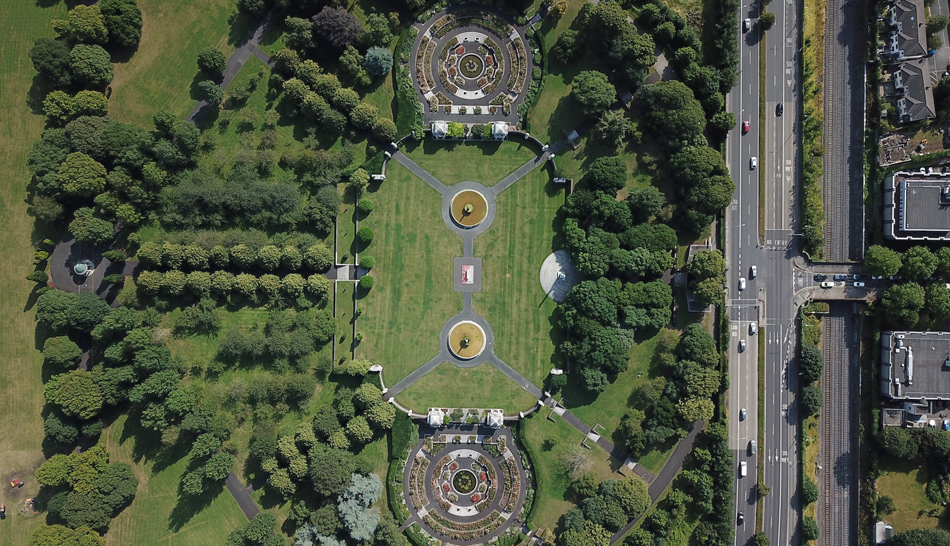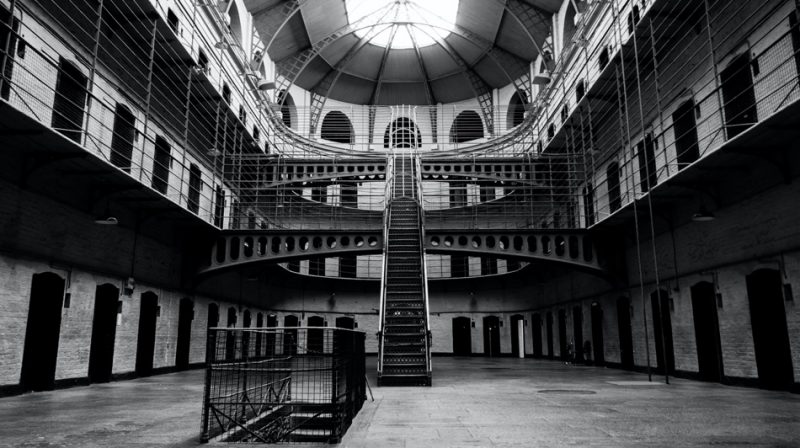It is intriguing to revisit a country’s historical past and learn about its fascinating nuances especially when it is Ireland which has numerous places — buildings, monuments, and castles — of historical significance. One such place is the Kilmainham Gaol (prison) that was built in the 18th century (1796), and was run by the Grand Jury of Dublin. However, you would notice a marked shift in your mood when you visit the dark corridors and the spooky interiors of this place as it revives the horrifying tales of its inmates; it is a brutal reminder of the abject squalor, days of starvation, extreme suffering, oppression, unimaginable and incessant physical and mental cruelty, and ultimate execution that they were subjected to. Those were the times of religious and political intolerance and dogmatism.
The British royalty did not spare people even for the most minor offenses, and took no mercy even upon the women and children (some of them as young as seven) who stole food during the Great Famine (1845-52). The cells soon became overcrowded because thousands were arrested over petty crimes they committed to feed themselves and their families during the famine.
The gaol has a fearsome history and the walls, chambers, and entrance of the prison cell speak volumes of the atrocity that the captives were exposed to. Petty offenders were forced to share space with the hardened criminals. It is shocking to know that women were forced to cohabit with male inmates inside crammed cells amidst dirty and unlivable conditions. They were treated much worse than their male counterparts and were denied some of the privileges that were extended to the latter; they were forced to sleep on the straw or the floor whilst the men had sleeping cots.
Later, during the Easter Rising of 1916, many political prisoners and noted leaders who rebelled against British rule were also housed in Kilmainham, and later executed.
In 1861, a new East Wing was added, and by 1881 the prison became all-male. It has been the site for multiple executions — including those of famous figures in Irish history who spearheaded the fight for Irish independence. Robert Emmet, the Fenians, Anne Devlin, Countess Markievicz, and the leaders of the 1916 Easter Rising are only some of the names who were put to death inside the gaol at the behest of the British rulers. Executions were done outside the Kilmainham gaol.
The prison was shut in 1924 by the Irish Free State government because the image it portrayed did not fit in with the message they wanted the government to stand for. The prison eventually fell into disrepair as it remained unused for the longest time. Funds were raised, and it was later renovated, restored, and reopened to the public as a museum in 1971. Today, it is maintained and run by the Office of Public Works.
A Must Visit Place for History Buffs

Kilmainham is one of the major tourist attractions of Dublin, and the whole of Ireland. People are curious to learn more about the hair-raising tales that turned the place into a living hell for the convicts. The weak and the innocent did not suffer in the hands of the jail authorities alone; their stay also culminated into relentless days of extreme punishment when the hardened criminals exploited their vulnerabilities in many ways.
As you take a walk down the cold aisles of the gaol museum, you cannot help but wonder and admire at the resilience and unshakeable grit of the innumerable lives that breathed their last here in those dark dungeons several centuries back. It is like time traveling up to the times, walking and living beside them, experiencing their untold hardships, and also imagining to hear the loud ghost screams of pain, desperation and hopelessness from the walls of the gaol. But today at least their souls rest in peace when there are hundreds of visitors willing to listen to their stories of endless horror and pain to which they finally succumbed.
Kilmainham is a place with a deep story and a depth of character. It is a must-visit place for all history buffs. It is a jail so it will not be an inviting proposition for young kids; the older ones, however, can learn much about Irish history, and about the social and political climes of the era from the knowledgeable tour guides who throw light upon such an important chapter in Irish history, leaving you more informed and enlightened. They also share interesting anecdotes, facts, and stories about the gaol that you will not find in any book of history.
Kilmainham Gaol is the largest preserved Victorian jail in Europe.
Info on Timings and Tickets
Kilmainham Gaol is open to the public round the year. The hours of operation are slightly different between the months of May to September, and again between October to April. Please take a look at the timings below with the corresponding months — from 1st May to 30th September — 8:45 am to 7 pm; from 1st October to 30th April — 9:30 am to 5:30 pm.
You must book online in advance because tickets sell out fast. You must also reach at least 15 minutes earlier than the allocated tour time. Please do not be dependent on walk-in tickets; they sell fast and are distributed on a first come first served basis only.
Admission is free for kids under 12. The fare is 4 euros for children aged between 12 and 17. All children under the age of 18 must be accompanied by an adult. Adult tickets cost 8 euros. Family tickets cost 20 euros (2 adults and 2-3 children between 12 and 17 years). Students who are 18+ must produce valid student identification to avail of discounts; they pay 4 euros for entry.
Please check their official website for changes and updates before booking your tickets. Please also get in touch with the authorities via email for educational tours and group bookings. A maximum of 9 tickets can be purchased online.
How to Contact (Address & Phone)

Kilmainham Gaol is located at Courthouse, Inchicore Road, Kilmainham, Dublin 8, Ireland. For queries you can call +353 1 4535984 or write to kilmainhamgaol@opw.ie.
The museum lies to the west of the city center. The nearest LUAS stop (red line) is Suir Road, and is a 10-minute walk distance. You can even take buses from the city center. There are a number of them available —13, 40, 68, 79, and 123. It is a short distance from anywhere in the city so you may even avail of taxi rides. It is a 45-minute walking distance from College Green. It has no car parking facilities though.

